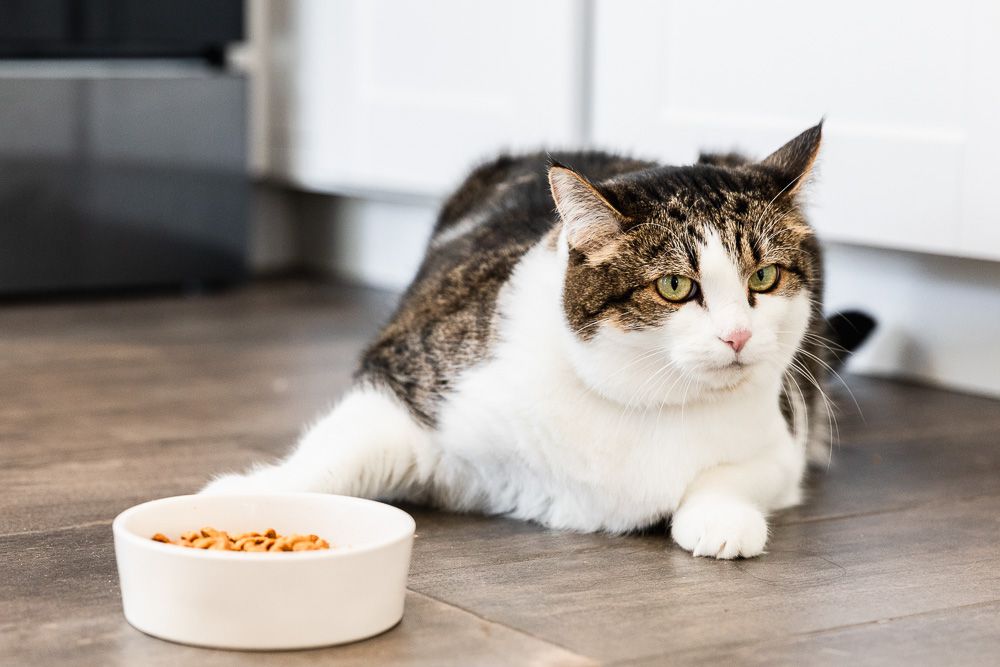Cats, those enigmatic creatures we share our homes with, often display particular tastes and preferences when it comes to their diet. While commercial cat food provides balanced nutrition, many cat owners wonder if there are other options that can add variety to their feline friend’s meals. In this article, we’ll delve into the world of cat cuisine, exploring what cats can eat besides their regular cat food.
1. Meat Mania: Embracing Feline Carnivores
Cats, as obligate carnivores, thrive on a diet centered around meat. In addition to cat food, pet owners can tantalize their cat’s taste buds with cooked, unseasoned meats such as chicken, turkey, beef, and occasionally small portions of pork or fish. It’s imperative, however, to ensure that the meat is devoid of bones and thoroughly cooked to mitigate any potential health risks.
2. Fishy Business: Treading Carefully with Aquatic Delicacies
While fish might seem like a delectable option, it’s crucial to exercise restraint in its inclusion in a cat’s diet. Excessive consumption of fish can lead to nutritional imbalances and pose health risks due to potential mercury contamination. Opting for cooked, boneless varieties like salmon or tuna as an intermittent treat rather than a dietary staple is advisable.
3. Dairy Dilemma: Navigating Feline Lactose Sensitivity
Contrary to popular belief, not all cats possess the ability to digest dairy products. Many adult cats suffer from lactose intolerance, rendering them unable to metabolize lactose, the sugar present in milk. While some cats may relish a small portion of cheese or plain yogurt as an occasional indulgence, others may experience gastrointestinal distress. It’s prudent to introduce dairy products cautiously and monitor your cat’s response closely.
4. Veggie Ventures: Exploring Plant-Based Options
Although cats predominantly thrive on a meat-based diet, they can derive benefits from consuming modest quantities of select vegetables. Steamed or cooked vegetables such as carrots, peas, or green beans can supplement your cat’s diet with fiber and essential nutrients. However, it’s essential to view vegetables as complementary rather than alternative food sources to meat-based meals.
5. Fruit Frenzy: Selecting Safe and Sumptuous Fruits
Certain fruits pose as safe treats for cats when offered in moderation. Small pieces of fruits like cantaloupe, watermelon, or banana can serve as delightful occasional treats. However, it’s advisable to steer clear of citrus fruits like oranges or lemons, which can trigger digestive issues in felines.
6. Avoid These No-Nos: Safeguarding Feline Well-being
While venturing into alternative dietary options for your cat, it’s paramount to avoid certain foods that can prove harmful or toxic to them. These include chocolate, caffeine, onions, garlic, grapes, raisins, and products containing xylitol, an artificial sweetener commonly found in sugar-free items and gum.
Embracing Diversity in Feline Dining
While cat food serves as a cornerstone in meeting feline nutritional requirements, diversifying your cat’s diet can contribute to their enrichment and satisfaction. From an array of meats and fish to carefully selected fruits and vegetables, numerous safe options await exploration. By introducing new foods gradually, monitoring your cat’s responses, and seeking guidance from your veterinarian, you can treat your beloved feline companion to a spectrum of flavors while safeguarding their health and well-being.
